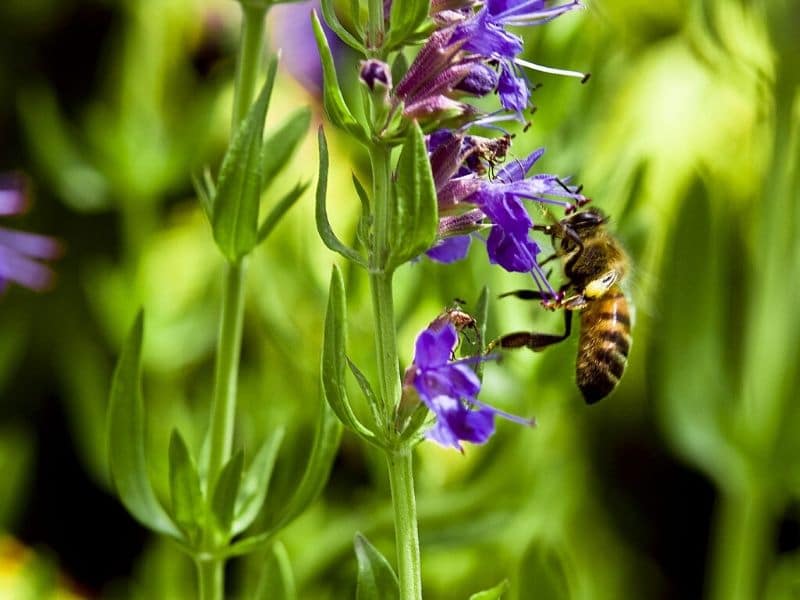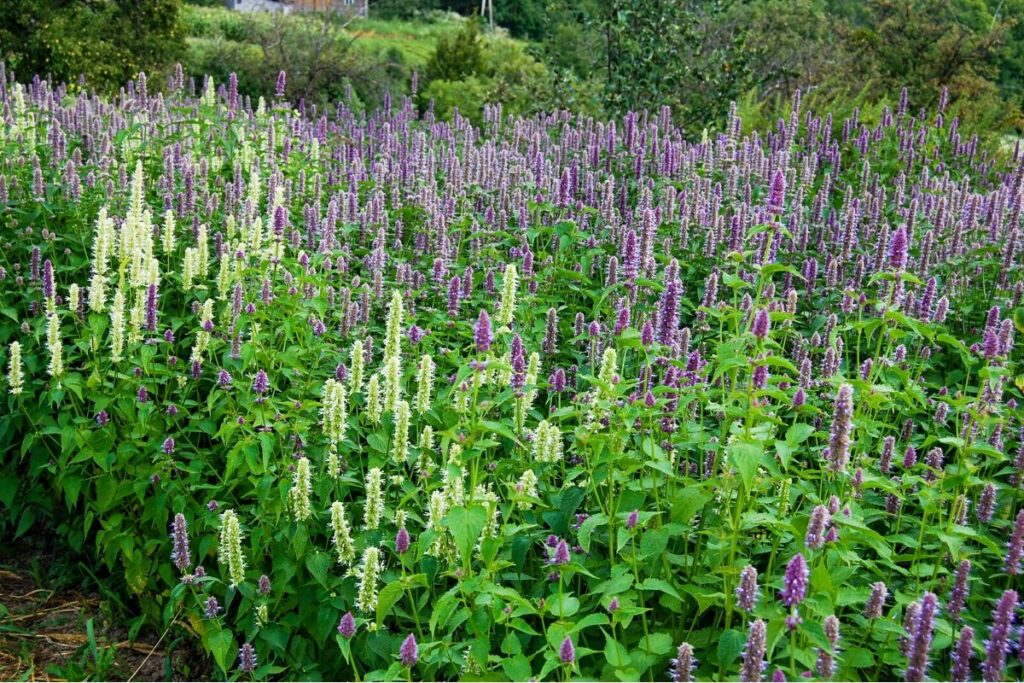A member of the mint family (Lamiaceae family), anise hyssop (Agastache foeniculum) smells like anise and tastes a bit like licorice! A vivacious grower, this plant can be found growing wild all over North America, where it is commonly used as a medicinal plant.
With a colorful history and an even more colorful modern-day appearance, anise hyssop is a plant with strong symbolism and inherent meaning.
So without further ado, let’s take a closer look at hte meaning and symbolism of anise hyssop flowers, aka Agastache foeniculum.
What Does Anise Hyssop Mean?
This name is derived from the Greek “agan” and “stachys”, which translates roughly to “lots of wheat.” Anise hyssop is known by the scientific name of Agastache foeniculum.
The name Agastache foeniculum pays homage to the large blue or lavender flower spikes that this plant has, which look a bit like a stalk of wheat. With more than 21 fellow plants in the Agastache genus, anise hyssop is not true anise or hyssop plant.
The common name or English name of anise hyssop flowers is likely most attributed to its culinary uses and cultural significance.
These flowers grow best in full sun and are related to other plants like Mexican giant hyssop and Hyssopus officinalis.
What Do Anise Hyssop Flowers Symbolize?

Anise hyssop, with all of its medicinal powers, is often believed to symbolize cleanliness. It has been used since ancient times to clean holy places and burned as an essential oil to improve one’s health.
In fact, some people even use hyssop to clean and sanitize their beehives. It is not only a calming scent for bees but can encourage them to remain in the hives.
What is the Cultural Significance of the Anise Hyssop Flower?
Unfortunately, there is very little in the way of recorded history when it comes to anise hyssop. While medicinal uses of the plant were recorded by the first Native Americans in the Great Plains, the rest of its history is murky, including its cultural significance.
The Chippewa people used a combination of elk mint and anise hyssop to treat ailments like the common cold and chest pain. Anise hyssop contains numerous beneficial compounds that make it one of the best essential oils for herbal medicine.
Other medicinal benefits include the ability to treat burns, a common use in Chinese medicine. The fragrant leaves are also used as a cleansing treatment.
Culinary Uses for Anise Hyssop Flowers
If you’re a foodie always on the hunt for new flavors and ingredients, you might want to add anise hyssop flowers to your list. Not only do they look beautiful in dishes, but they also have a pleasant, licorice-like flavor that adds a unique twist to your cooking.
One way to use anise hyssop flowers is to infuse their flavor into liquids, such as simple syrups or teas. Simply steep the flowers in hot water or sugar syrup for a few minutes, then strain and use as desired. This is a great way to add a subtle anise flavor to cocktails, desserts, or even savory dishes like glazed meats or roasted vegetables.
The teas, in particular, are highly attractive to many people. They are great for treating a sore throat, especially when used with lemon juice.
Another option is to use the flowers as a garnish, adding a pop of color and flavor to your dishes. Sprinkle them over salads, desserts, or even on top of soups for a delightful touch.
But that’s not all – anise hyssop flowers can also be used in baking. Replace traditional lavender or rose petals with the flowers in your favorite shortbread or cookie recipes for a tasty, floral twist.
What is the Symbolism of an Anise Hyssop Tattoo?
An anise hyssop tattoo can have plenty of meanings. Not only can it symbolize cleanliness and purity, but it can also be used to reference sacrifice.
With its purgative qualities, it can also be used to symbolize humility, penitence, or even baptism, too. It is often used in religious tattoos to represent holiness and devotion.
Flower Meaning and Symbolism of Anise Hyssop in the Bible
Anise hyssop is one of the most popular biblical plants, appearing in both the Old and New Testaments. In the book of Exodus, anise hyssop is one of the ingredients used to make the holy oil used to anoint the Tabernacle and the priests. In the New Testament, it is mentioned in Matthew 23:23 in a rebuke by Jesus to the Pharisees for their hypocrisy regarding tithing.
Anise hyssop has traditionally been symbolic of healing and purification. In ancient Greece, it was believed to have healing properties and was used to treat a variety of ailments, including coughs and fevers. Native American tribes also used anise hyssop for medicinal purposes, including as a tea to soothe sore throats and ease digestion.
In addition to its medicinal properties, anise hyssop has a long history of being used as a symbol of redemption. In the book of 2 Samuel, King David is redeemed after committing adultery and murder by an act of kindness from a wise woman who gives him bread and anise hyssop to eat. This act leads to David’s repentance and forgiveness from God.
When Should You Give Someone an Anise Hyssop Flower?
Anise hyssop is a gift best given to gardeners. This mint-like herb attracts butterflies, bees, and other pollinators, so you will be giving them a useful as well as an attractive gift if you choose to do so.
Although anise hyssop is not traditionally given in a bouquet, the flowers are considered ornamental and are often used in salads. It can also be used to treat a variety of common health ailments, making it a wonderful plant to give someone as a “get well” present.
*Photo by weha/depositphotos







